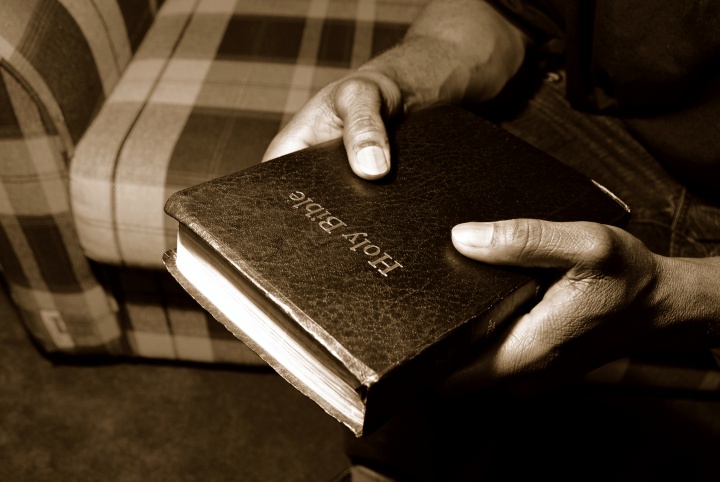The Christian Passover
Reviving Ancient Biblical Truth
Downloads
The Christian Passover: Reviving Ancient Biblical Truth

Following the example of Jesus Christ, members of the United Church of God will again revive the ancient biblical command to take the Christian Passover this year, which will occur on the evening of April 21, 2016 (see Holy Day calendar).
“Serious in tone, the Christian Passover signifies for members the acceptance of the saving sacrifice of Jesus Christ as a profound atonement that opens the door to salvation and eternal life,” said Victor Kubik, president of the United Church of God.
Since it embraces the Christian Passover with its biblical symbols of unleavened bread and wine, the Church does not take part in modern Easter ceremonies, which were unknown to Christians in the 1st century. The observance of Easter as a separate non-biblical event was not established until nearly three centuries after the death and resurrection of Christ.
Mr. Kubik explains why the church observes this ancient event: “While the observance of the Passover first occurred as a ceremony given to the ancient Hebrews shortly before the biblical Exodus, Jesus Christ Himself changed the symbols of the Passover bread and wine to personally reflect His sacrifice for all humanity—all Christians must today partake of these symbols.” Further, Mr. Kubik noted, as the Apostle Paul would later emphasize to a largely gentile (non-Jewish) congregation in a Greek commercial port city, “Christ, our Passover, was sacrificed for us” (see 1 Corinthians 5:7).
The Church thus understands and teaches that the original Passover ceremonial sacrifice of a lamb described in the book of Exodus (Exodus 12:1-28) foreshadowed (reflected) the coming sacrifice and death of Jesus Christ. According to the biblical account, when John the Baptist first saw Jesus, he exclaimed: “Behold! The Lamb of God who takes away the sin of the world!” (emphasis in the original).
The Gospel accounts present this important sequence, which the United Church of God keeps: shortly before His death and on the spring day that the Passover lamb was traditionally to be sacrificed, Jesus told His disciples “Go and prepare the Passover for us” (Luke 22:8). Following the Passover meal nearly 2,000 years ago, Jesus instructed His disciples how they were to set apart and observe the Passover in the years ahead.
Demonstrating the deep humility expected of Christians, during this first Christian Passover service, Jesus Christ Himself “poured water into a basin and began to wash His disciples feet” (see John 13:5 for the biblical account). By thus illustrating through personal example how all Christians are to be servants, Jesus is recorded as telling His disciples: “If I then, your Lord and Teacher, have washed your feet, you also ought to wash one another’s feet.” Accordingly, the modern reviving of this ancient teaching by the United Church of God includes a physical foot-washing ceremony where all members physically reenact the example of Jesus.
As the biblical record continues, Jesus then told His disciples that as part of this Passover observation they must take of unleavened bread as a symbol of His body. This understanding and acceptance is necessary for reconciliation with God, which as the author of the book of Hebrews would later explain, “we have been sanctified through the offering of the body of Jesus Christ’ (Hebrews 10:10). In the Bible Jesus earlier described Himself: “I am the bread of life” (John 6:48)
As Mr. Kubik continued: “The biblical record then shows that Jesus offered each of the first disciples a small drink of wine. What did that signify?” He noted that the book of Leviticus in the Torah shows that the ancient Hebrews were given a complex set of rituals involving animal sacrifice, which were made as a ritual atonement to restore and reconcile the ancient Hebrews into a spiritual relationship with God. But, as the Church teaches from the book of Hebrews: “It is not possible that the blood of bulls and goats could take away sins” (Hebrews 10:4).
According to the New Testament accounts, the shed blood of Jesus Christ can and does take away sin, which makes possible a direct relationship with God the Father. As the apostle John recorded in the first chapter of the book of Revelation: Jesus “loved us and washed us from our sins in His own blood” (Revelation 1:5). In the modern restoration of the ancient Christian Passover, taking of a small amount of wine thus openly declares that a person has accepted that the blood of Jesus Christ has covered his personal sins and that the door to a reconciled new relationship with God is possible. Mr. Kubik asks: “Why is this important?” The answer? “Accepting this sacrifice and relationship leads to eternal life in the Kingdom of God,” he explained.
The Christian Passover service begins the Spring Holy Day season as observed by the United Church of God. As the biblical record shows (see John chapters 13 through 20), after magnifying the symbols of the Passover, Jesus was subjected to a mock trial, tortured and finally put to a gruesome and humiliating death through crucifixion. After His death, He was buried in a tomb immediately before the beginning of the first Holy Day of the annual Festival of Unleavened Bread. Three days and three nights later, Jesus was resurrected on late Sabbath afternoon. The United Church of God publishes a detailed informatics illustration that harmonizes the Gospel accounts (available to download as a PDF).

Following taking of the Christian Passover, the United Church of God observes the biblical Spring Holy Day season of unleavened bread, which last seven days and pictures the commitment of a Christian to overcome sin. More information about the Christian Passover, the Days of Unleavened Bread and other biblically valid Christian Holy Days is available in the Church’s Bible Study Aid titled God’s Holy Day Plan: The Promise of Hope for All Mankind. It can viewed online and is also available without charge.
“God’s Holy Day festivals are filled with hope and joy about the present and future of humanity,” said Mr. Kubik. “I invite all to open their Bible and experience this joy for themselves.”
